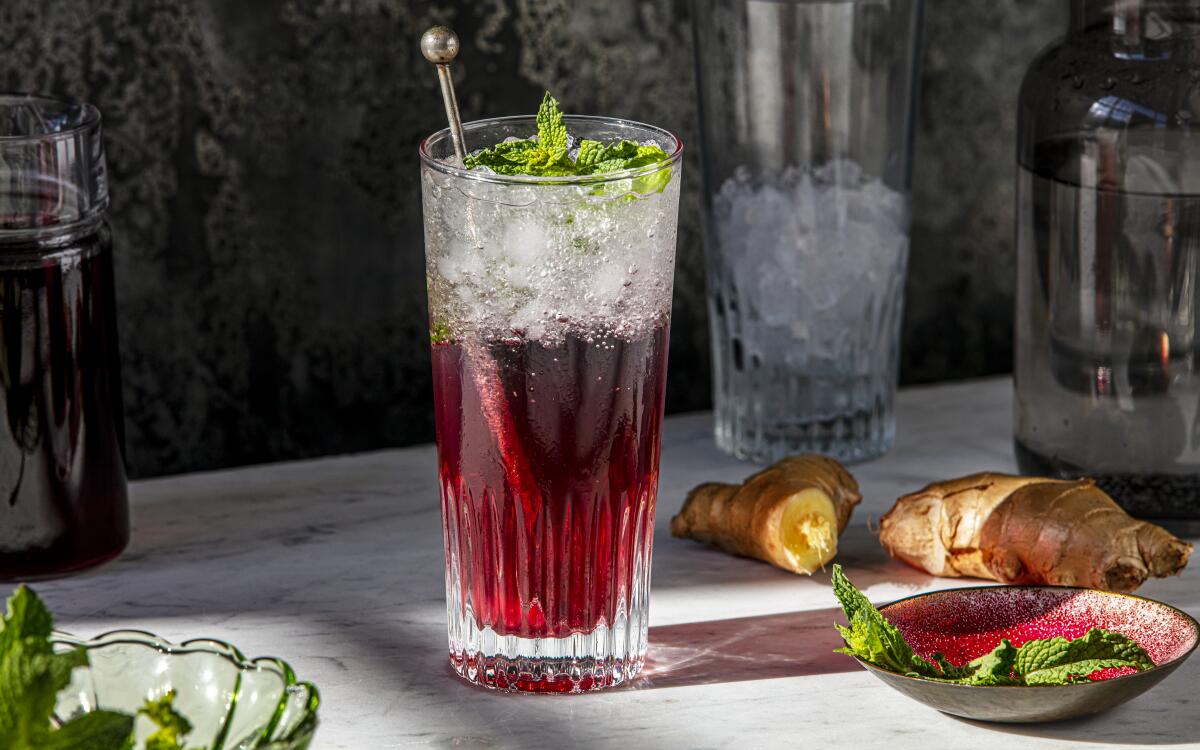Bissap

Traditionally, Juneteenth celebrations offer an abundance of red food as a symbol of the struggle toward emancipation, the blood of our ancestors and their resilient spirit to persevere to overcome oppression. That food includes barbecue, red beans and rice, red velvet cake and strawberry soda. Sweet beverages, a luxury denied to the enslaved, were enjoyed by the newly freed.
My first taste of bissap — a sweetened hibiscus beverage — was in Dakar. However, the last time I had it was at a Senegalese cafe around the corner from the Studio Museum in Harlem. Its cloying sweetness brought up memories of the markets that line the sandy district of Grand Yoff in Dakar. It also made me think that the drink would be really delicious as a spritz.
Soul food is defined by the necessity of improvisation, adaptation and evolution of Afro-Indigenous foodways as Black cooks migrated into the diaspora. I’ve served this drink, and other interpretations of West African dishes, on my menus since my first pop-up to celebrate this movement. — Ray Anthony Barrett
Make the syrup: In a small saucepan, combine the water and sugar and bring to a simmer over high heat, stirring to dissolve the sugar. Remove the pan from the heat and add the tea bags. Let them steep for 10 minutes, then remove and discard the tea bags. Stir in the ginger and orange blossom water and let the ginger steep for five minutes. Strain the hibiscus syrup through a fine sieve into a glass measuring cup and let cool completely.
To serve, fill a 12-ounce glass one-third of the way with ice, then pour 1 ounce hibiscus syrup over the ice. Bruise 4 mint leaves by clapping them between your palms, then put them in the glass and stir. Fill the glass with sparkling water, stir and enjoy.
Get our Cooking newsletter.
Your roundup of inspiring recipes and kitchen tricks.
You may occasionally receive promotional content from the Los Angeles Times.









